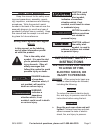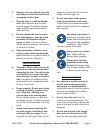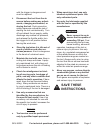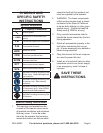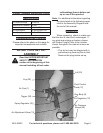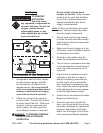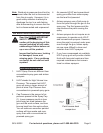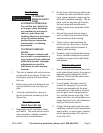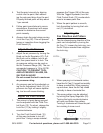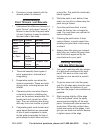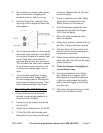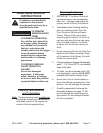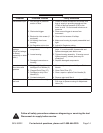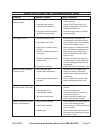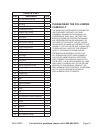
SKU 66222 For technical questions, please call 1-800-444-3353. Page 8
Note: Residual air pressure should not be
present after the tool is disconnected
from the air supply. However, it is a
good safety measure to attempt to
discharge the tool in a safe fashion
after disconnecting to ensure that the
tool is disconnected and unpowered.
OPERATING INSTRUCTIONS
Read the ENTIRE IMPORTANT
SAFETY INFORMATION
section at the beginning of this
manual including all text under
subheadings therein before set
up or use of this product.
Inspect tool before use, looking
for damaged, loose, and
missing parts. If any problems
are found, do not use tool until
repaired.
Understanding HVLP
HVLP Spray Guns are different from 1.
conventional spray guns and airless
sprayers.
HVLP stands for High Volume Low 2.
Pressure. This means that HVLP
guns will spray a larger amount of
paint at lower Cap Pressure than
conventional air powered spray guns.
Cap Pressure is the amount of air 3.
pressure present at the Spray Cap
(1). Lower pressure results in less
paint being air dried between the
gun and the work surface, and less
bounce back from the work surface.
You will achieve a smoother painted
surface with less waste and over-
spray than with a conventional air
powered spray gun.
Air powered HVLP and conventional 4.
spray guns differ from airless spray-
ers that are uid powered.
Airless sprayers use a uid pump to 5.
force the paint through the gun to the
spray cap. The uid pressure at the
cap atomizes the paint causing the
spray.
Airless sprayers do not require an air 6.
compressor to operate as do HVLP
and conventional sprayers. However,
since the paint is pumped under pres-
sure through the gun, airless spray-
ers are more difcult to clean and
maintain than HVLP sprayers.
If you have compressed air available, 7.
HVLP spray guns will provide a better
nish with less paint waste and less
required maintenance that conven-
tional or airless sprayers.
Paint bounce back
comparison.




